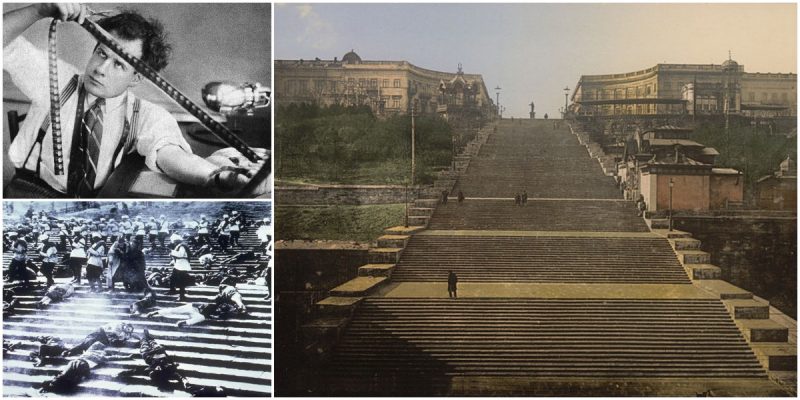In 1925, the Soviet film director and theorist Sergey Mikhaylovich Eisenstein, born in Riga, Latvia, released his critically acclaimed 75-minute long film “Battleship Potemkin.”
Shot as a silent movie and symmetrically divided into five parts, the movie is a tribute to the Russian Revolution of 1905 and is now regarded as a masterpiece of international cinema. This view is mainly due to how Eisenstein combines extraordinary imagery with a dialectical montage to give grand elegance of form in the art of storytelling.

Eisenstein’s movie is a story about sailors of the Imperial Russian Navy’s Black Sea Fleet and how, by starting a mutiny against their tyrannical superiors aboard the battleship Potemkin, they made the first steps towards the Russian Revolution in 1917. It is told in such a manner that seemingly random images, conceivably independent of the “main” narrative, are shown out of order so they have the maximum psychological impact in the viewer. The scenes are like steps placed such that viewers can interpret their order for themselves, thus building their own personal ‘staircase’ (narrative).
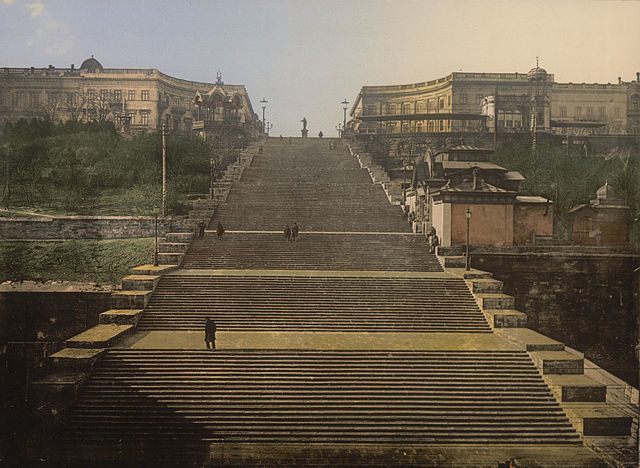
The 4th and most notable sequence of the film, “The Odessa Steps”, depicts a massacre of unarmed citizens on a giant staircase is set in Odessa, Ukraine. Designed in 1825 by Italian architect Francesco Boffo in collaboration with Avraam I. Melnikov, an architect from St. Petersburg, the staircase was built in 1841 under the supervision of the English engineer John Upton.
In order to connect the seashore with the central part of the city, over 4 years they managed to place 200 steps, thus forming a 142 meters long walk to serve as a formal entrance to Odessa. And yet it seems much, much longer than that. It was precisely designed for when standing at the very bottom and looking upwards, all you could see is an endless walk up an endless set of steps.

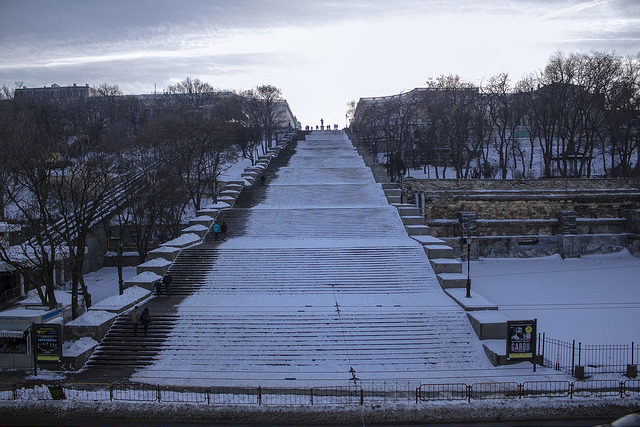

The first step is 21.7 meters (70ft 8in) wide and the last, 12.5 meters (41ft). Right at the top, anyone climbing the staircase is greeted by the Duke de Richelieu Monument, a statue in the Duke’s image, cast in bronze and built in 1828 to commemorate Armand-Emmanuel de Vignerot du Plessis, Duc de Richelieu, the first elected governor of Odessa.
As a prominent French statesman, Armand-Emmanuel fled the French Revolution and served in Catherine’s army against the Turks, earning the rank of major general. In 1803, Czar Alexander I appointed him as the governor of Odessa. He is now remembered for conceptualizing the design and the infrastructure of the city and is considered to be the founding father of Odessa.
The statue now stands as a symbol for freedom hard earned, and the staircase in some way represents the ferocious battle fought to achieve it.
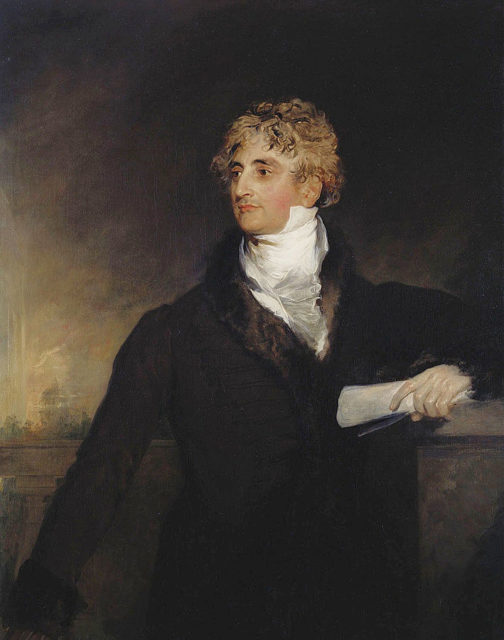
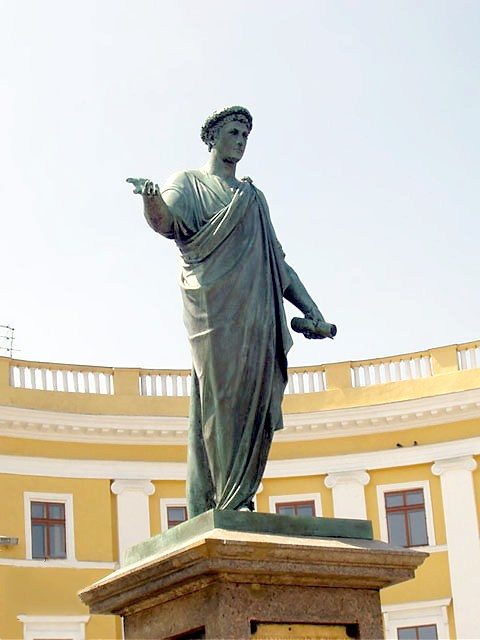
Mark Twain celebrated his contributions, the staircase and his statue at the top, in his travel journal, Innocents Abroad: “I mention this statue and this stairway because they have their story. Richelieu founded Odessa – watched over it with paternal care – labored with a fertile brain and a wise understanding for its best interests.”
And just as Armand is celebrated as the founding father of the city, Sergey Eisenstein by using the staircase for the eight and a half minute sequence in his film is now praised as the father of film montage and founder of modern cinema.
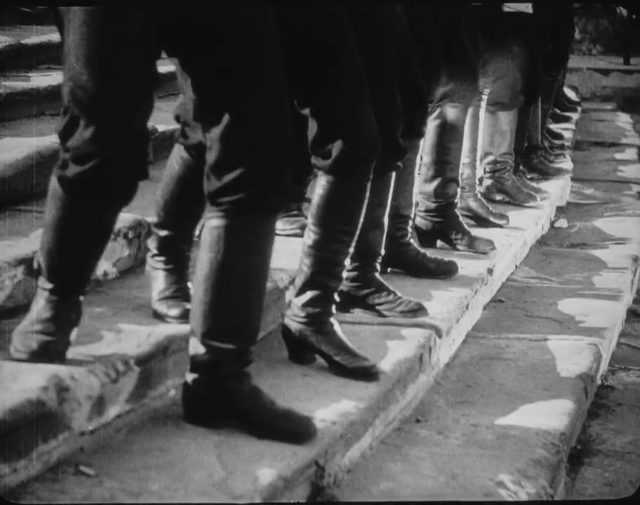
The slaughter on the stone steps—where hundreds of citizens were gunned down by the impersonal, machine-like advance of the tsarist militia from above is the most dramatic part of the movie.
The sequence begins with swift cuts of people from different classes in eager anticipation of the arrival of the Potemkin. Cheering and waving, it seems they are in full support of the mutiny. Right after that, a sudden scene of a woman being shot in the face is shown, followed by a glimpse of a line of soldiers pushing through the crowd, killing everything in their way. At the very end, a baby in a stroller rolls down the stairs. This final shot lasts for so long in contrast to all the others, that when finally the mother’s face is displayed, all the horror from the previous scenes can be felt in her expression.
This is the first recorded attempt of parallel montage moviemaking and quick editing as a way to create drama and suspense. Executed with great success, “The Odessa Steps” is, without question, the scene that propelled Eisenstein and “Battleship Potemkin” to fame and both hold a special place in movie history to this day.
And so, just as this giant staircase provided a perfect entrance to a grand city, it also presented an ideal opportunity for the creation of an iconic scene that would become recognized as the first sequence of its kind in film history and one that sparked the movie editing technique that is most used today.
In 1955, at the 50th anniversary of the mutiny on the Battleship Potemkin, the citizens of Odessa honored Eisenstein’s great influence on filmmaking and renamed the staircase the Potemkin Stairs. His shot of the baby stroller falling down the steps has been given homage in so many films, for example, Brian De Palma’s The Untouchables (1987).
